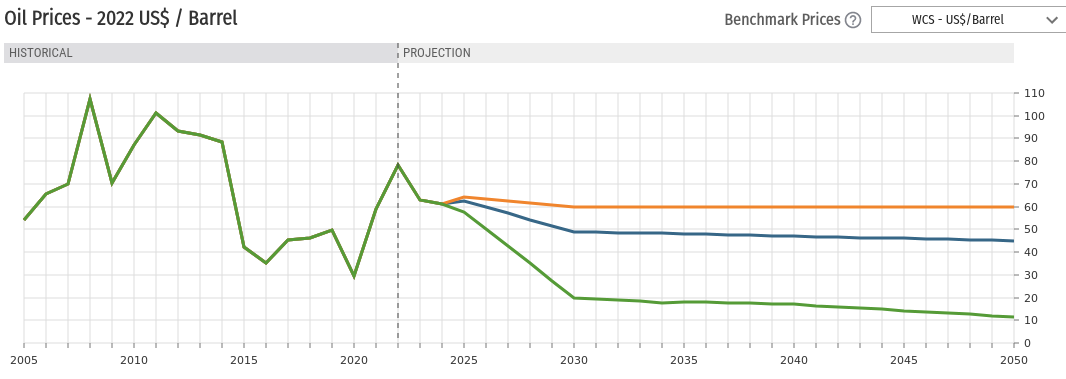September 22, 2023
600,000 barrels a day
With the rise in oil prices, the TransMountain Pipeline is back in the headlines. Also, because it is actually going to come online at some point soon.
- TransMountain capacity: 600,000 barrels a day
- Current capacity of the western pipline: 300,000 barrels a day.
- New total: 890,000 barrels a day
- Age of current pipeline: 70 years.
- Purchased at C$4.5 billion ($3.3 billion)
- Canada has spent: C$31 billion since purchasing it.
The destination of the crude is up for debate and where it goes affect where other oil flows:
-
A dozen refineries along the US Pacific Coast (Chevron Corp., BP Plc and Marathon Petroleum)
- Currently Saudi and/or Iraq oil
-
An alternative: the Asian market
- California cannot refine heavy Canadian oil
- Chinese oil shippers are ready to take full tank loads to Asian refineries
- Cost overruns mean companies want cheaper oil. The price is paid by each company who wants to lease part of the pipeline's capacity. Near $11 a barrel right now. Any reduction in price will be an extra subsidy to oil companies.
- BUT! Less than 70% of the new capacity may be used (so, only 440,000 barrels a day may come online).
- Canadian Natural and Cenovus Energy Inc. will have to increase production.
- Canada’s oil production will have to grow more than 900,000 barrels a day.
- Total estimated impact by 2030: 6 million barrels a day
- This will impact the price of Western Canadian Select. Reducing the $17 a barrel reduction in price compared to WTI, gaining companies more money.
Subsidies are everywhere for oil an gas.
What's the real problem? None of this actually makes any economic sense if Canada is to meet its climate obligations. And, makes almost no sense if the world is to meet its climate obligations—even under the ridiculous low bar of net zero by 2050.
Here is the prices of oil in the different scenarios.


Under a global net zero scenario, the price of oil falls through the floor and not much of what is described above is economically sustainable. When prices fall this much, it isn't a market that drives production, it is a controlled production supply.
As an example of current projections and then compared to a global net zero, below is the different levels of output under two scenarios.
The first scenario is the current investment projection for output. Below that is the 2050 production levels we need to be at to reach Net Zero under a global effort for Net Zero.
Keep in mind that this production level has to be sustained for 20 years at a price that is essentially 1/5th the price it is today. A price so low that it has not been seen ever.
Current projections
Above the bar is the expected production in 2050, estimated by volume of the squares.
Below the bar is the current production by type and province in 2023.

Global net zero
Here is what oil production looks like under a global net zero.
Above the bar is where production would need to be in 2050. Below, is where it is now.

UN meetings
Climate commitments?
- Oil companies have captured the UN process.
- All that came out is a promise of more private sector investment support coming in COP28.
- All the private sector support is only possible with massive subsidies from government.
- Private sector support is not guaranteed.
- Countries are likely to follow the UK's lead and reduce already announced regulations as populations buckle under the real costs of transition.
Fruit and vegetables
Production costs are driving high prices. Look at the cost inputs and you can ask one question:
- Will any of these cost drivers stop getting more expensive with climate change and the transition to green energy?
